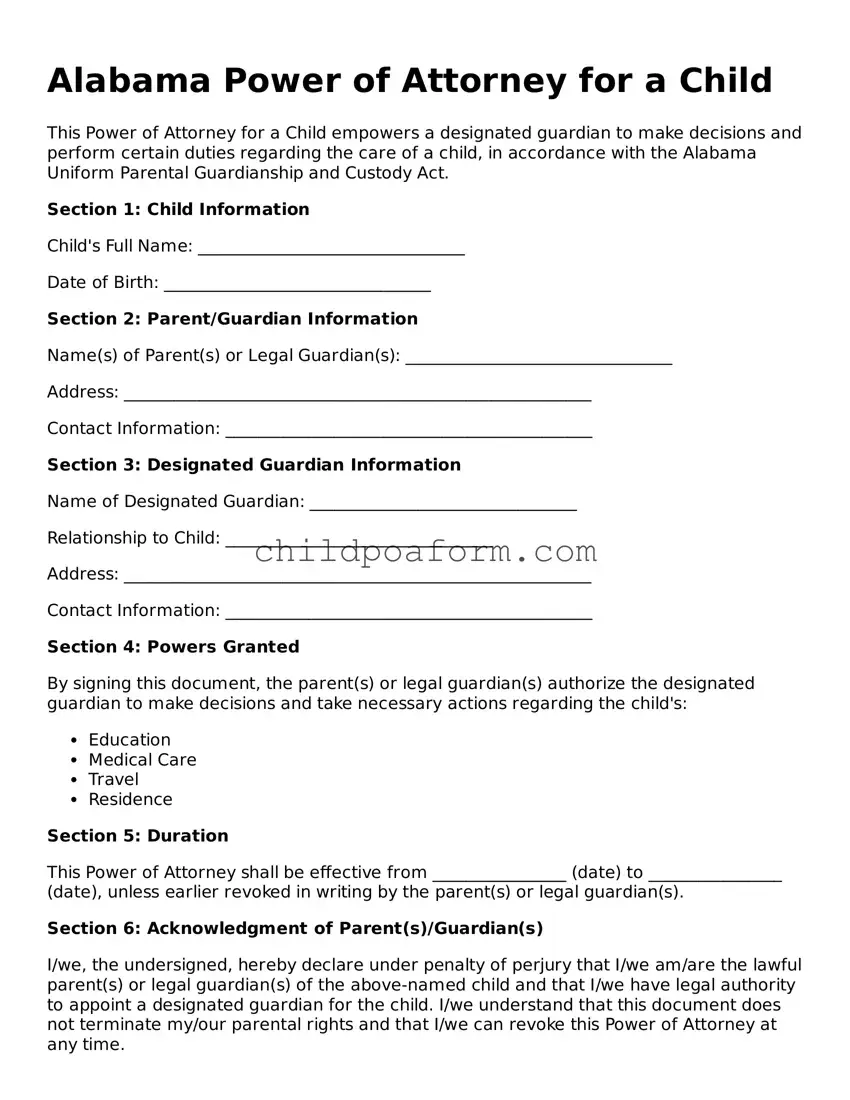Instructions on Utilizing Alabama Power of Attorney for a Child
Filling out a Power of Attorney for a Child form in Alabama is an important task for anyone looking to legally grant another person the authority to make decisions on behalf of their child. This formality ensures that in the grantor's absence, the child's welfare, education, and health needs can be appropriately managed by a trusted individual. The process requires attention to detail to ensure that the form is filled out correctly and in compliance with Alabama state laws. The steps outlined below will guide you through the process, ensuring that all necessary information is provided and the form is properly executed.
- Review the Form: Start by carefully reading the entire form to understand what information and decisions you need to provide. This ensures there are no surprises and allows you to gather any necessary information beforehand.
- Enter Personal Information: Fill in the names and full addresses of the child, the parents/legal guardians, and the appointed attorney-in-fact. Make sure all names are spelled correctly and addresses are up-to-date.
- Determine Powers Granted: Specify the exact powers being granted to the attorney-in-fact. This can include decisions about the child’s education, health care, and general welfare. Be clear and precise about what authority is being given.
- Set the Time Frame: Clearly state the duration for which the power of attorney will be effective. Include both the start and end dates. Alabama law may limit the duration, so refer to state regulations to remain compliant.
- Review Restrictions or Limitations: If there are any specific restrictions or limitations you wish to place on the attorney-in-fact's powers, list them clearly on the form. This is essential to ensure that your child’s welfare is protected in alignment with your expectations.
- Sign the Form: The parent or legal guardian must sign the form in front of a notary public to validate the document. Ensure this step is done correctly, as it’s crucial for the power of attorney to be legally binding.
- Notarization: The form must then be notarized, confirming the identity of the signer and the voluntariness of the act. The notary will fill out their section, sign, and apply their official seal.
- Distribute Copies: After notarization, make copies of the completed form. Provide one to the appointed attorney-in-fact, keep one for your records, and consider giving one to your child’s school or healthcare provider for their files.
Once these steps are completed, the Power of Attorney for a Child will be in full effect, providing peace of mind that the child’s affairs will be managed according to the grantor's wishes. Remember, the well-being of the child should always be the foremost consideration when completing this form and selecting an attorney-in-fact.
